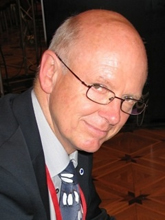
“A dramatic global warming event 55 million years ago gives us a particularly clear indication of what happens when there is a sudden release of 1500 billion tonnes of carbon into Earth’s atmosphere. It gets hot, the seas become more acid, and there is widespread extinction of life. We are a third of the way to repeating that ancient natural input of carbon through our own agency. The message from the rocks is that it would be a good idea to stop pulling that carbon trigger.”
Dr Colin Summerhayes, the statement’s lead author, added: “The world has been cooling and losing CO
2 from the atmosphere for the past 50Myr. Thirty-four million years ago that process led to the first large ice sheets on Antarctica. During the Ice Age, [fluctuating] solar radiation [caused] alternating glacial and interglacial periods. These changes… were accentuated by the release of CO
2 and water vapour to the atmosphere from the warming ocean, and by shrinking sea ice and northern hemisphere ice sheets - reflecting less [heat] back into space.
We are living in an interglacial, but as Summerhayes says: “During parts of the previous interglacial, 130,000 years ago, polar temperatures reached 3-5°C above today’s, and global sea levels were around four to nine metres higher than they are now. The message from ice cores is that continued emissions may be expected to lead to warming and sea-level rises similar to those of the last interglacial period – something we would be wise to avoid.”